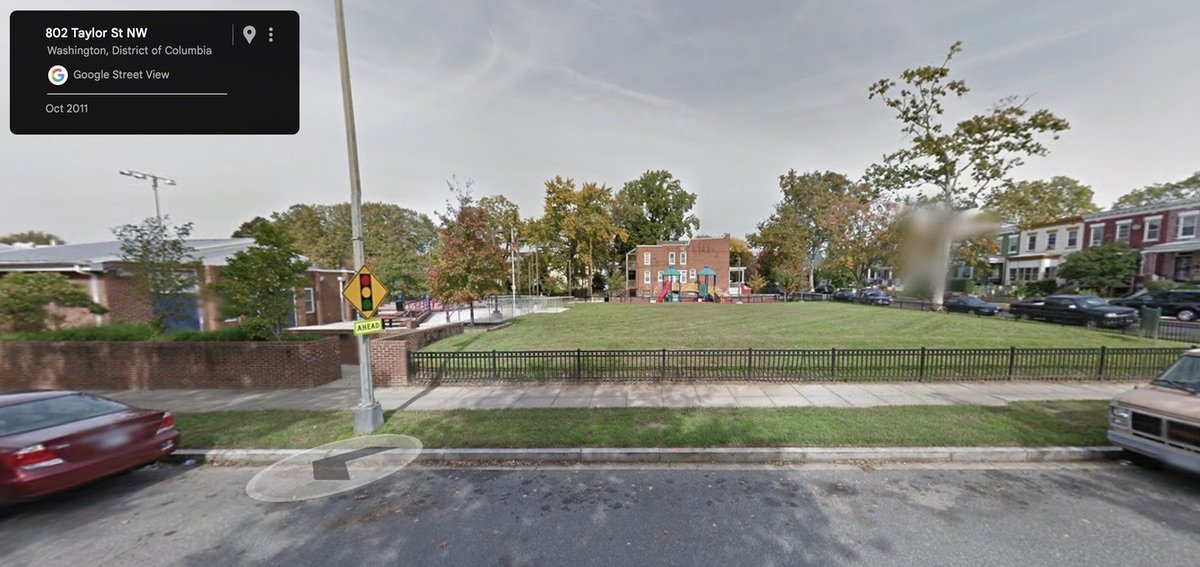Remediating lead pipes should be your concern
/DC lead pipe replacement (photo: IntangibleArts)
by Roger Green, guest contributor
The use of leaded gasoline ended decades ago. The hazards of lead paint are well documented and fairly well known. But, the hazards of lead in water because of outdated lead water pipes are hardly known, poorly understood and silently poisoning our children.
I was oblivious to the idea of lead in my drinking water until a 2004 letter from WASA, DC Water's predecessor, telling me my home in Petworth was fed by lead service lines -- lines I could pay to have replaced.
Before my lead water service line was replaced, the lead levels in the water from my home measured almost 20 times the maximum acceptable levels for lead! After the replacement of my water service lines and the lead water lines running down the street in front of my house, my water tested under acceptable Environmental Protection Agency levels.
Although I was able to pay to have my lead water line replaced, that option was not financially feasible for many of my neighbors. Those who were unable to pay received a “partial” replacement, which involved removal only of the part of the lead line in public space. Partial replacements have been associated with spikes in lead-in-water levels. A 2011 Centers for Disease Control (CDC) study actually found a link between these replacements and increases in children’s blood lead levels.
There is no safe level of lead in drinking water. Any lead in your drinking water is hazardous to your health, and lead in drinking water is particularly bad for the health of children and pregnant women.
Many homes in Washington have old lead water service lines. The vast majority of DC homes have leaded solder or leaded brass, which can leach lead into our water and make it unsafe to drink unless it is filtered correctly.
Map of lead pipes in Petworth (DC Water)
Earlier studies identified the Petworth neighborhood to have a high density of lead service lines, and DC Water's new online maps (see example above) show this to be true. DC Water has created the first interactive online map (see the DC Water website) as a great start to helping their customers minimize their lead exposure. But, the online map displays a disclaimer that says: "DC Water does not guarantee the accuracy of these records and maps." According to a recent news article, DC Water does not know the material used in 104,000 (of a total of 125,930) service lines in the District. This is a good reason why you should have your water tested (and maybe even have your service lines checked), even if the map indicates your lines are not lead.
However, you should be aware that a one-time test could be misleading because lead release is highly variable and can change from day to day, season to season, and minute to minute. A one-time test should not be used to determine if a home’s or building’s water is "safe" or "unsafe" in relation to lead. And even if your service line is not lead, there may be leaded solder or brass that could be leaching lead into your water. The best way to protect yourself is to take precautions, including using a filter that is specifically certified to remove lead.
I work with the Campaign for Lead Free Water, a recently founded national coalition of affected and concerned individuals, researchers, and non-governmental organizations working to ensure that the problem of lead in US drinking water is addressed with sound science and sound policy,
A founding member of the Campaign for Lead Free Water, Yanna Lambrinidou, recently testified before the DC City Council. Lambrinidou, a noted Virginia Tech researcher, pointed out that our city officials have known for 30 years about the lead in water contamination problems in our schools, but they have routinely misled us, and continue to mislead us about the severity of these problems and the health risks involved.
Another group associated with the Campaign, Earth Justice, recently presented a white paper to the EPA detailing how partial lead service line replacements (replacement of only the public space portion of lead service lines) cause more lead hazard than complete replacement of lead service lines. DC has conducted almost 20,000 partial lead service line replacements, and past experience shows that most of those occurred simply because the home owners could not pay for replacing the “private” side of the line.
DC officials recently announced a new policy for schools that accepts the American Academy of Pediatrics’ decree that no level of lead is acceptable in children's drinking water. The city government's implementation of this policy is still pending and will require diligent public oversight to make sure that at least our children are protected throughout the many public facilities they use.
DC Water's new online map and the DC government's announced policy change are important steps forward to making sure public drinking water is safe to use. But, government and local water agencies have not adequately informed citizens about the hazards of lead in their water and have not done nearly enough to eliminate the problem.
Safe drinking water is an absolute necessity and a basic human right!
This is a fervent plea for you to take action to protect yourself and your loved ones. Start by getting more information about your home's water service line and about the drinking water at public facilities your family uses.
The use of lead-certified water filters in a city like ours with an extremely high prevalence of lead-bearing plumbing materials seems like a simple and reasonable precaution. Use water filters if you are uncertain about the safety of your drinking water!
The long-term goal should be the replacement of all lead water pipes and fixtures. This is an expensive but necessary action that will require public pressure and local and federal government support.
I got involved with the Campaign for Lead-free Water because I think it's crazy to do nothing while children around me are being poisoned by their drinking water. What will you do to protect your family from the hazards of lead in drinking water?
Courtesy DC Water
(Note from Drew: I'm having the lead pipes from the city mainline replaced in two weeks, along with the pipes going into our house. DC Water is covering the cost of the replacement on public property, and we are paying for the replacement of the pipes from the meter to our house. It's about $1,600. I highly recommend you consider doing the same if the work hasn't been done already. Contact DC Water Customer Service at (202) 354-3600 to request information about your water service pipe.)
About Roger Green
I am a 62 year old retiree (retired from a local electric utility as an IT supervisor, formerly an engineering analyst and a distribution system designer) who shares his home with a twenty year old son who is a junior at the University of Miami majoring in biomedical engineering. I moved back to my Petworth neighborhood 21 years ago after living in various DC area locations.
Roger Green
I was born in New Jersey, but was raised in DC from three years old - living and attending public schools in Petworth from 10 years old until college. I studied electrical engineering at Howard University (2 years full time) and George Washington U (part-time) before getting bachelors and masters degrees in technology management from the University of Maryland University College.
I got involved with the founding of the Campaign for Lead Free Water after participating in a Virginia Tech and DC Water study of local residents who had full or partial replacements of their lead service lines, and finding out from researchers and other activists how little was being done to inform and protect people from the ongoing problem of lead in their drinking water.



















